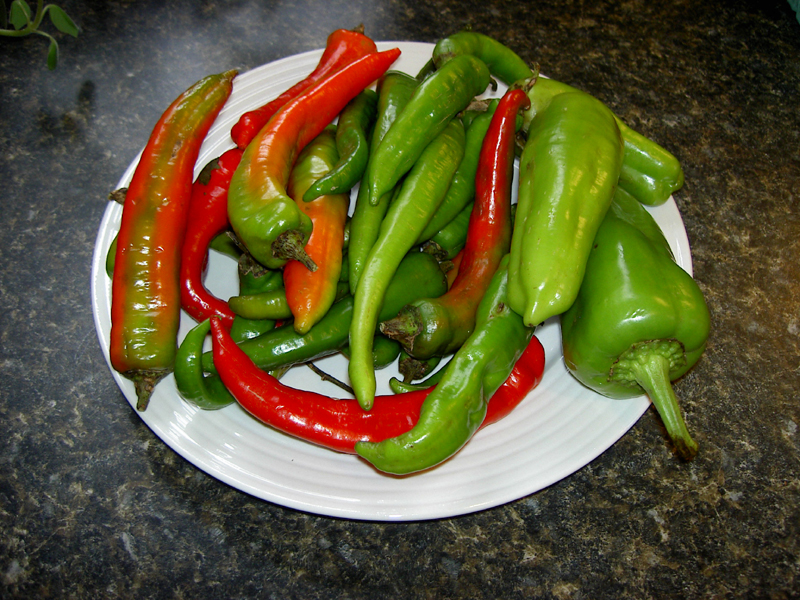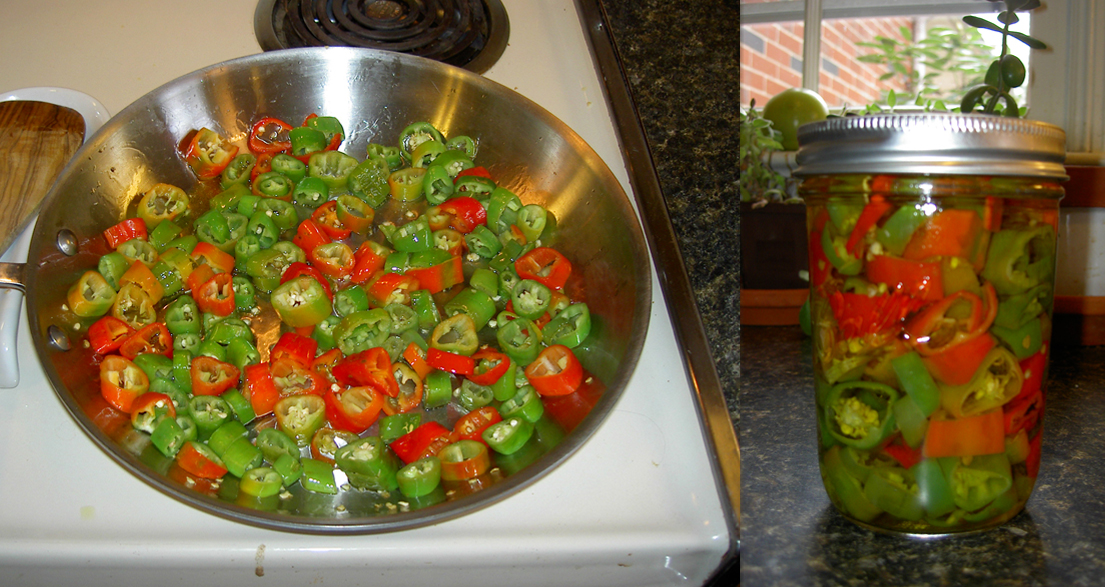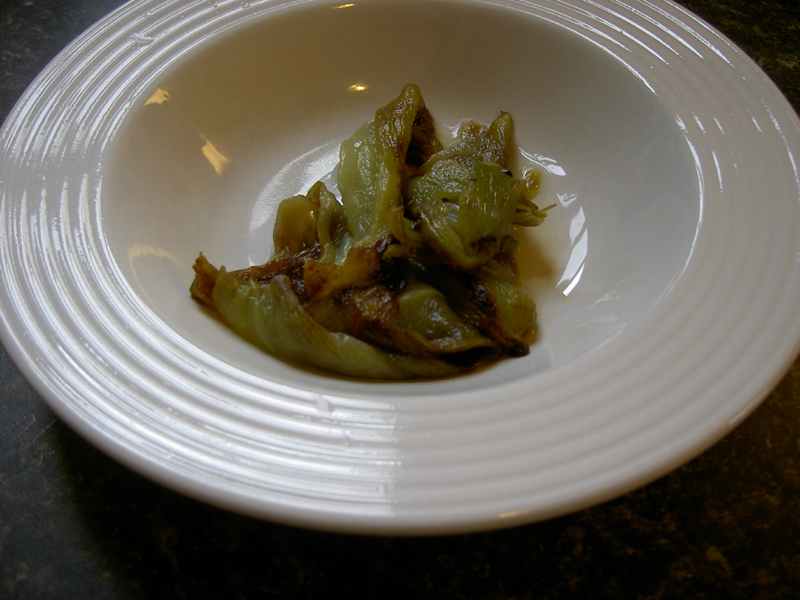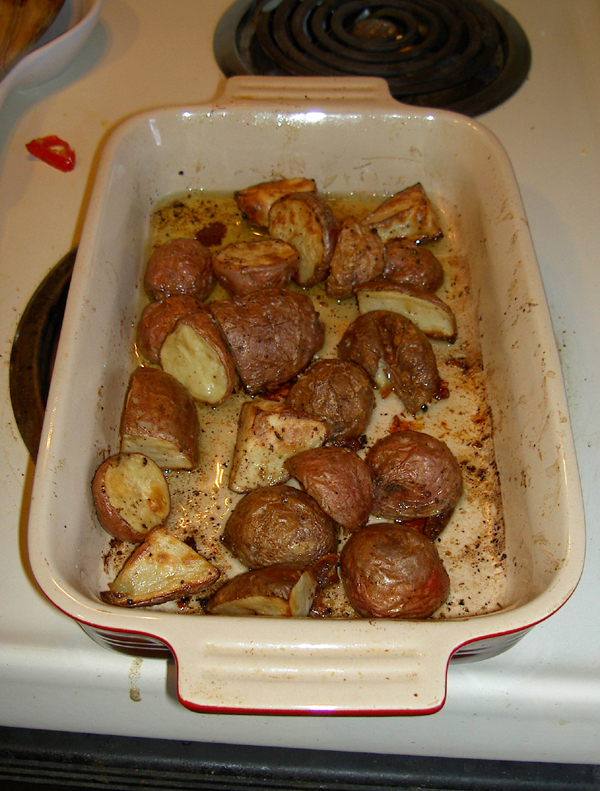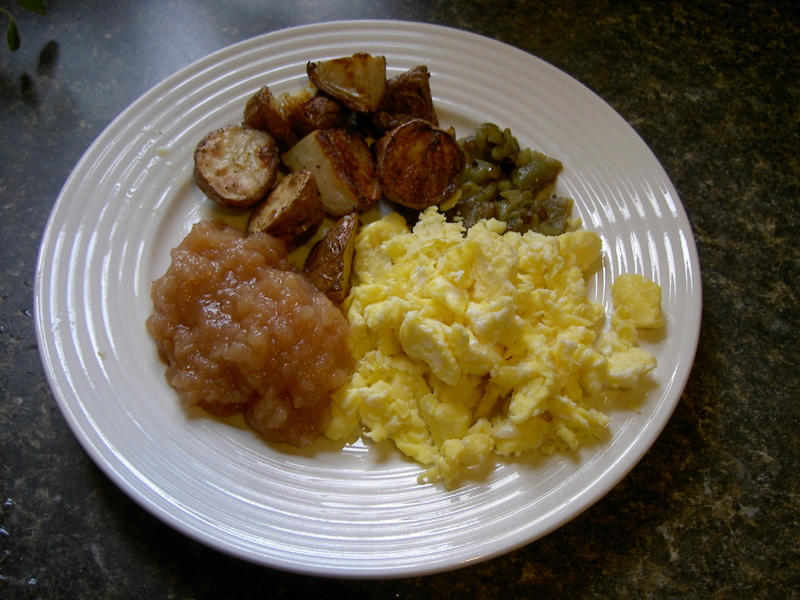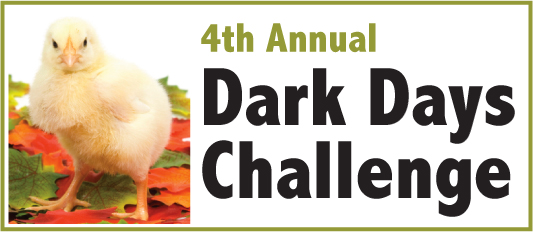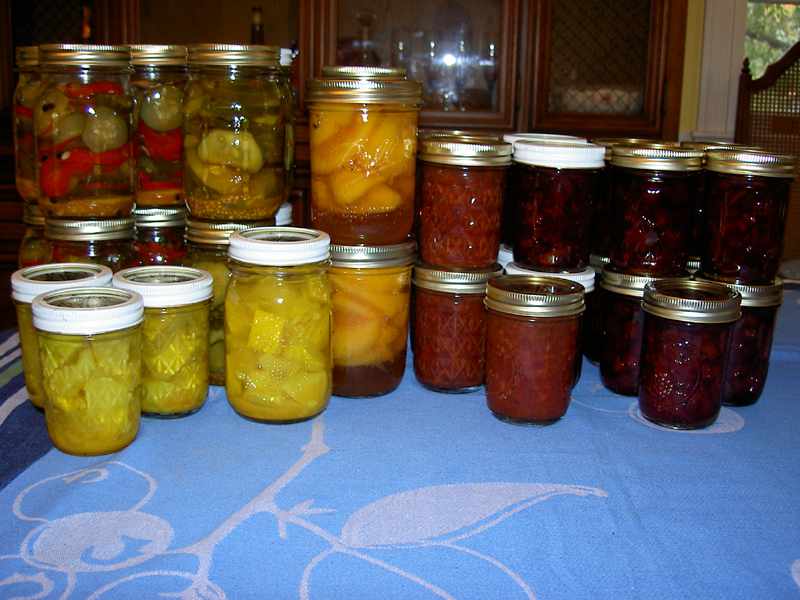
Three varieties of sweet potatoes.
Sweet potatoes are one thing we never have a shortage of around here. They are one of the reliable foods grown by our winter farmer, and this year we received them in the autumn months of our summer CSA as well. Because they store so well, we gladly swap greens for them whenever we can. Swapping requires commitment and being the first to pick up your box on delivery mornings; I find it worth it to get to have some choice about what you take home. In our case, we have five straight months of oodles of greens in the winter, and I’ll take almost anything else during the summer season. In any event, we have three varieties of sweet potatoes piling up around here: Beauregard orange, O’Henry white, and Japanese (Satsuma-imo) purple. With more than usual on hand this year, I’m going to be trying all kinds of different recipes.
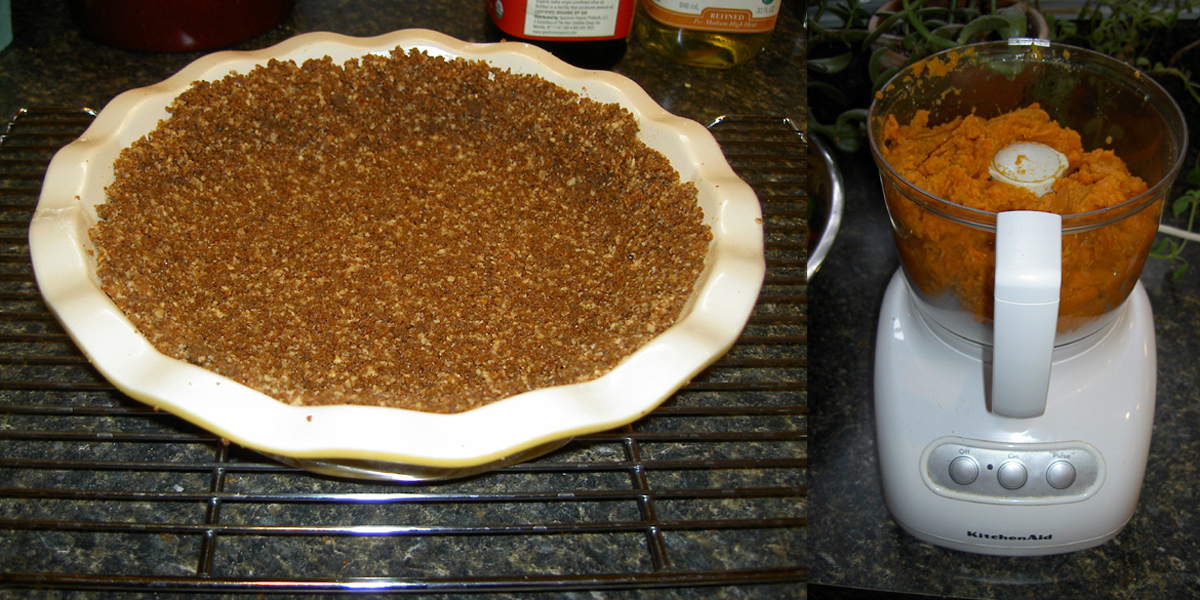
Prep: crust and filling.
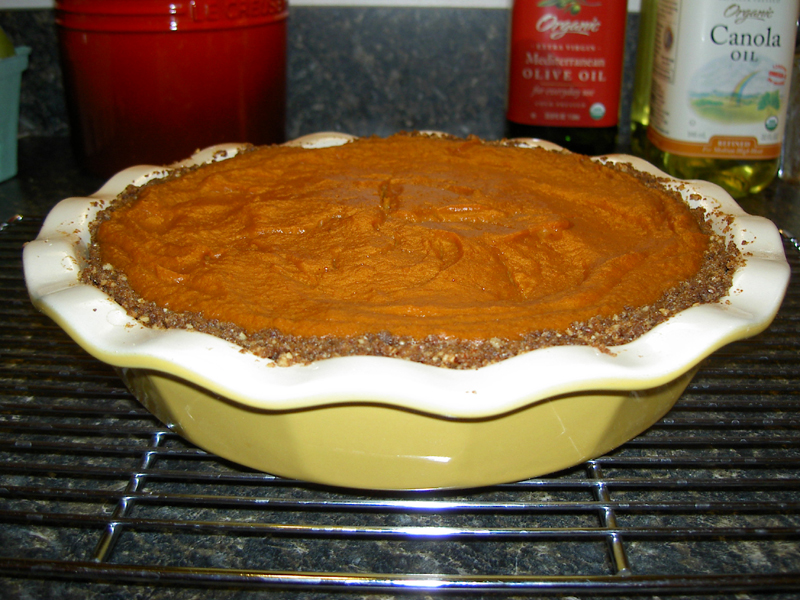
Sweet potato pie.
First up: sweet potato pie. I had never made a gingersnap crust before, but it’s the time of year when there are always some Sweetzels in the cupboard (which are apparently not just local but seasonal; I never realized you could only buy them in the fall and winter!). Besides those, the sweet potato, and the eggs, not much else can claim to be local. The ingredients are organic and ethically sourced, though, with the exception of the rum. I could pretend this pie is going toward some common good, like the town holiday potluck dinner on Saturday or the women’s club holiday potluck lunch on Monday, but that would be a lie. We’re just going to eat it as we pretend that the protein in the sweet potatoes, eggs, and soy milk make it a healthy dish and not a dessert. Maybe I’ll make another one for one of those events; more likely, I’ll bring an apple crisp or pie from the freezer.
To get back to this pie, it was good. It was not the dreamy delectable delight that I thought it would be, but it wasn’t half bad. It was a little soft (maybe too much filling, maybe the soy milk substituting for whole milk, maybe a bit undercooked) and the crust was more chewy than crispy (maybe also a bit undercooked). It also has a distinctly rummy taste, and is not overly sweet. I know the not overly sweet aspect is a feature of this pie, as it’s meant to highlight the natural flavorful goodness of the sweet potatoes. Which it does, that’s all true. I’ll have to see how I like it after a night in the fridge before I commit to making another. It was a hit with my partner, but then again: it’s pie.
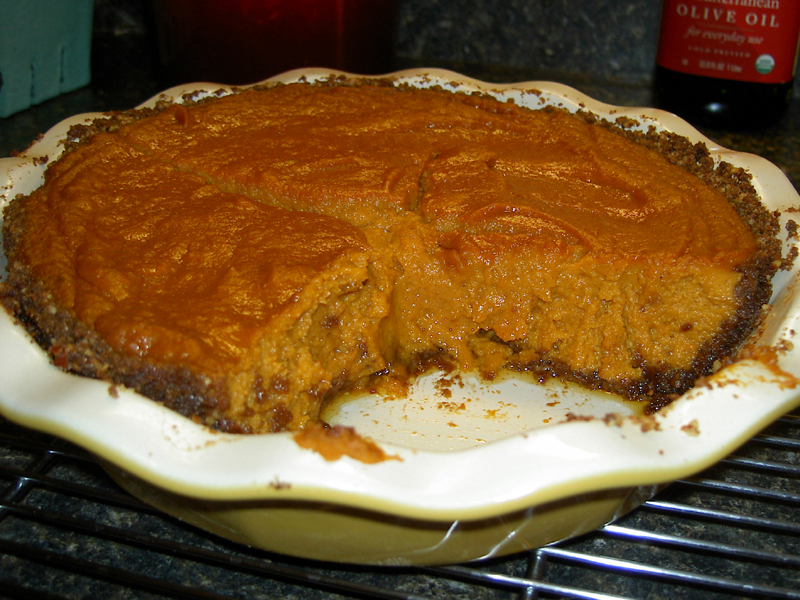
Mmm, pie.
